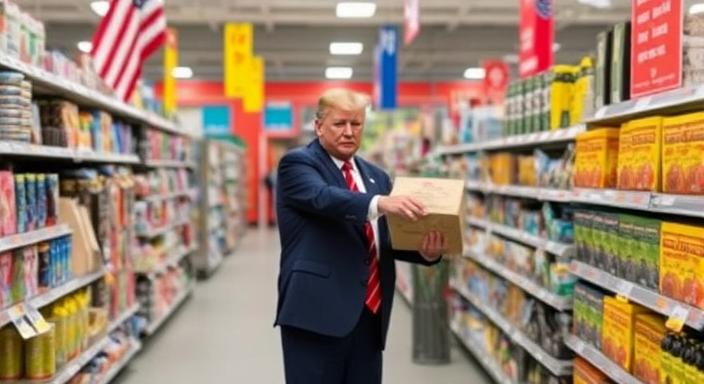US Inflation Persists, Trump’s Tariff Threats Could Push Prices Higher
A key inflation measure monitored by the Federal Reserve showed a slight increase last month, even as some underlying price pressures appeared to ease. The latest data comes amid concerns that former President Donald Trump’s threats to impose significant tariffs on imports from Canada and Mexico could drive prices higher in the coming months, affecting a wide range of goods from automobiles to avocados.
Exploring the Rise of UFC Featherweight Bryce Mitchell
According to a Commerce Department report released Friday, consumer prices rose 2.6% in December compared to the same month a year earlier, up from a 2.4% annual increase in November. This marks the third consecutive monthly rise. Excluding volatile food and energy categories, core prices increased 2.8% year-over-year, unchanged from November and October.
Apple iOS 18: Updates, Features and Information
However, the report also contained some encouraging signs. When measured over shorter periods, inflation is slowing. Core prices in December rose just 0.2% from the previous month, a pace nearly in line with the Federal Reserve’s annual target. Economists and Fed officials closely monitor core prices as they provide a clearer indication of future inflation trends.
Bryce mitchell : UFC Saudi Arabia Preview, Fight Feasts Cheesesteaks Review
The data follows the Federal Reserve’s decision earlier this week, led by Chair Jerome Powell, to pause further interest rate cuts. This decision was partly influenced by inflation remaining stubbornly around 2.5% over the past six months, above the Fed’s 2% target. Over the last three months, core prices have risen at an annualized rate of 2.2%, down from 2.6% in November.
Economists note that many businesses typically raise prices at the start of the year, which could lead to a slight uptick in inflation when January’s figures are released next month. However, they expect the Fed’s preferred inflation gauge to decline steadily in the coming months as higher inflation readings from early last year drop out of year-over-year comparisons.
Paul Ashworth, chief North America economist at Capital Economics, warned in a note that the growing risk of Trump imposing tariffs earlier than anticipated could pose an upside risk to inflation. “Beyond that, however, the growing risk that Trump will impose tariffs a little earlier than we are assuming presents an upside risk to inflation,” he wrote.
In December, overall inflation rose 0.3% from the previous month, driven largely by a spike in gas prices. If monthly increases at this level persist, they could exceed the Fed’s target. The Commerce Department’s report also highlighted that consumer spending increased by a robust 0.7% in December, supported by steady wage growth, higher stock prices, and rising home values. Incomes rose 0.4%, but with spending outpacing income growth, the savings rate fell to 3.8% from 4.1%.
Notably, Americans increased spending on goods such as electronics and furniture, likely in anticipation of potential tariffs on imported products. This trend suggests consumers are accelerating purchases of manufactured goods before any tariffs take effect.
Underlying economic trends, however, point to lower inflation ahead. Rental prices and other housing costs are gradually moderating, and a sluggish labor market has led to slower wage growth, reducing pressure on companies to raise prices to offset higher labor costs.
“We seem to be set up for further progress,” Powell said at a press conference, referring to inflation. “But being ‘seem to be set up for’ it is one thing, having it is another. So we’re going to want to see further progress on inflation.”
For now, the Fed is likely to maintain its key interest rate at approximately 4.3%, down a full percentage point from its two-decade peak last year following three rate cuts in late 2024. The central bank expects higher borrowing costs to curb spending and further reduce inflation.
Meanwhile, consumer spending fueled strong economic growth in the final quarter of last year, with the economy expanding at an annual rate of 2.3%. While growth was slower than the 3.1% pace in the July-September quarter, the fourth-quarter expansion was weighed down by a sharp reduction in business inventories, which is expected to reverse in the coming quarters.
In summary, while inflation remains persistent, underlying trends suggest it may ease in the near term. However, the potential imposition of tariffs by Trump adds uncertainty and could push prices higher, complicating the Federal Reserve’s efforts to stabilize inflation at its 2% target.
